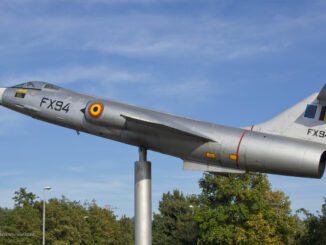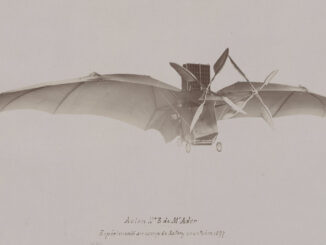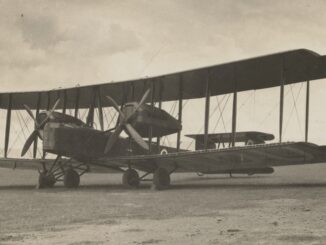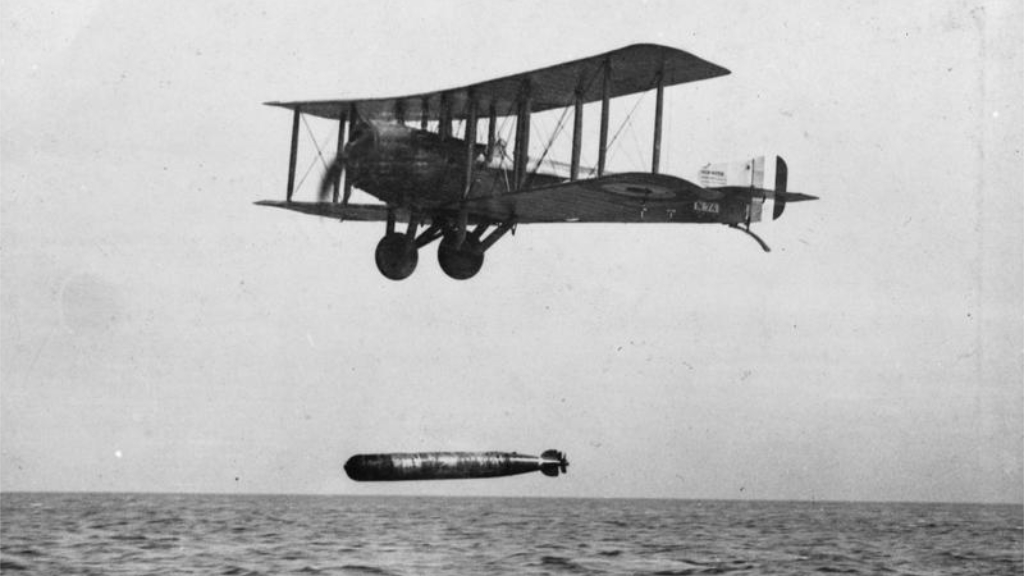 On 6th June 1917, the first wheeled torpedo-carrying aircraft in the world, Sopwith Cuckoo biplane, was officially approved for test flight. Shortly after, the aeroplane performed its maiden flight, although the exact date is unknown.
On 6th June 1917, the first wheeled torpedo-carrying aircraft in the world, Sopwith Cuckoo biplane, was officially approved for test flight. Shortly after, the aeroplane performed its maiden flight, although the exact date is unknown.
Development of the first landplane capable of carrying a torpedo began in October of 1916. The British aviation authorities assigned the task of designing a new aircraft to Sopwith Aviation Company. According to the initial specification, it had to be a single-seat biplane, powered by single engine and able to stay in the air for four hours.
It should be mentioned here that it was not the first time the Sopwith company was entrusted with such a task. Shortly before the outbreak of the Great War, the British aviation manufacturer developed two seaplane torpedo carriers, Sopwith Type TT and Sopwith Special Type C. The latter performed its maiden flight in July of 1914 and officially became the first British aircraft designed to drop torpedoes. Regrettably, during the evaluation flights, it was found out that the Type C is not able to lift the expected load of 1,000 lbs (approx. 453.6 kg) torpedo and the project was soon abandoned.
Third time is the charm, a proverb says and so was the company´s another attempt to create the torpedo carrier.
The Sopwith T.1 (T stands for torpedo), as the aircraft was designated, was a single-seat, three-bay biplane powered by single Hispano-Suiza 8Ba V-8 water-cooled piston engine, generating 200 hp. The aeroplane was designed for aircraft carrier operations and its wings could be fold backwards for storage. However, the T.1 was not able to perform carrier landing thus was not equipped with an arresting hook.
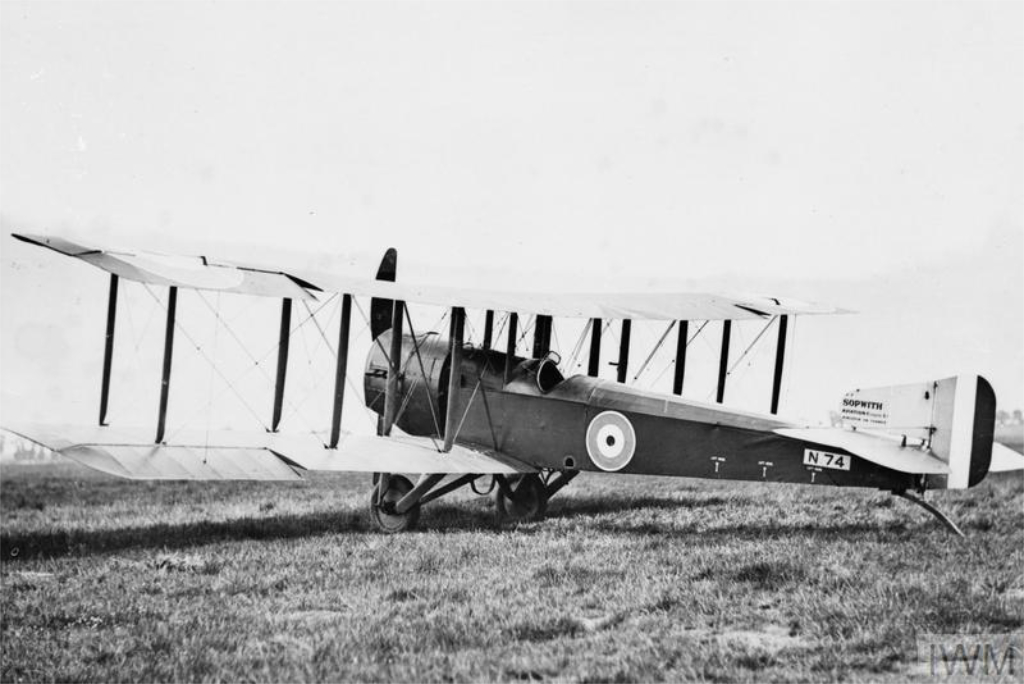
As mentioned above, the prototype of T.1 performed its maiden flight in June of 1917. The Admiralty was satisfied with the design and within a month placed an order for one hundred examples of the aeroplane. Nevertheless, serial production of the torpedo bomber was delayed due to issues with availability of the aforementioned Hispano-Suiza engine, which was prioritised for S.E.5a fighters.
Eventually, the T.1 was redesigned to accommodate Sunbeam Arab powerplant, also being a 200 hp, V-8 water-cooled piston engine. In February of 1918, despite the fact the aeroplane was developed by Sopwith, serial production of the T.1 was assigned to Blackburn Aircraft. Rumour has it that this decision of the Admiralty was behind the official name of the aircraft – Cuckoo, as it was dropped into the Blackburn´s ´nest´ like a cuckoo egg (although in fact, this name for the first time appeared only in post-war documents).
In addition, the Sopwith T.1 had to be manufactured also by Pegler & Co Ltd. and Fairfield Shipbuilding and Engineering Co. Ltd. but both contracts were later taken over by Blackburn.
In May of 1918, the first examples of the Cuckoo were delivered to the Royal Air Force for service trials and soon after several issues with the aircraft were reported. In consequence, the aeroplane was redeveloped again and received new undercarriage, vertical stabilizer and control surfaces.
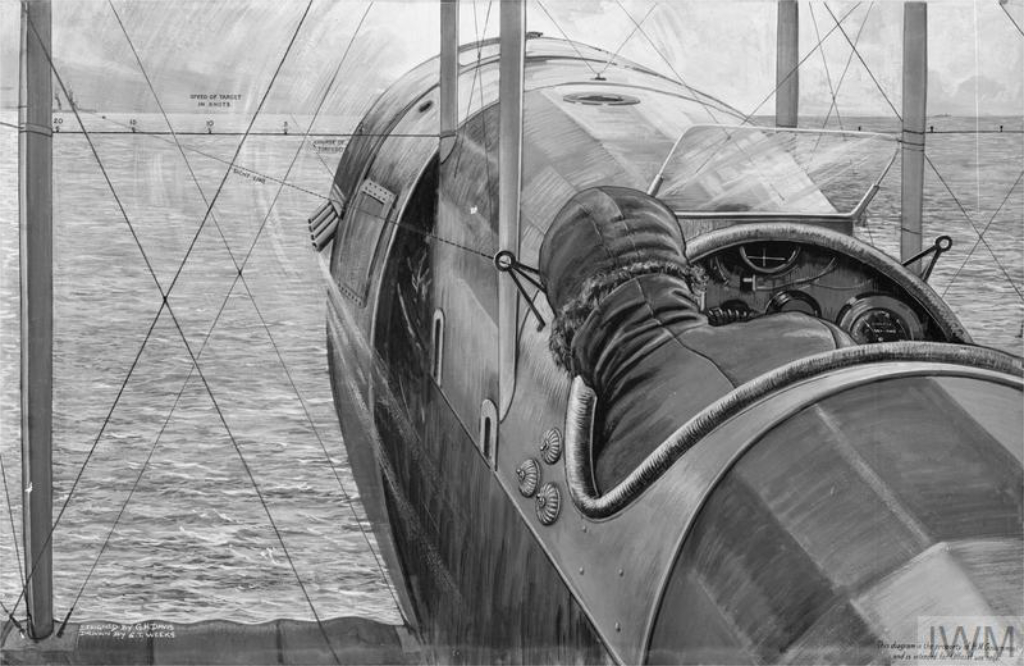
Only in August of 1918, the Sopwith Cuckoo torpedo bombers were delivered to the Torpedo Aeroplane School at the RAF East Fortune station in Scotland. In November of 1918, the first aeroplanes were assigned to No. 185 Squadron and embarked on HMS Argus. Nevertheless, it was too late for the Cuckoo to perform any combat missions before the end of the war.
At that time, the British aviation authorities had ordered a total of 350 examples of the Cuckoo. In the face of Armistice, that number was limited to only 230 aircraft – ninety already delivered examples and 140 in production.
During the post war service, the RAF evaluated the Arab engine was not suitable for operational performance. Therefore, some of the aircraft were re-equipped with Wolseley Viper powerplant, a derivative of the aforementioned Hispano-Suiza 8 engine. The aeroplanes with Viper engine were then designated as Cuckoo Mk II, while the Arab-powered ones became known as Mk I.
In 1923, the Cuckoo was declared obsolete and withdrawn from active service. Regrettably, no complete example of the first British wheeled torpedo-carrier survived until today.

Cover photo: Sopwith Cuckoo single-seat torpedo bomber biplane, © IWM Q 69295, cropped. All Imperial War Museums´ photos used under IWM Non-Commercial licence.

